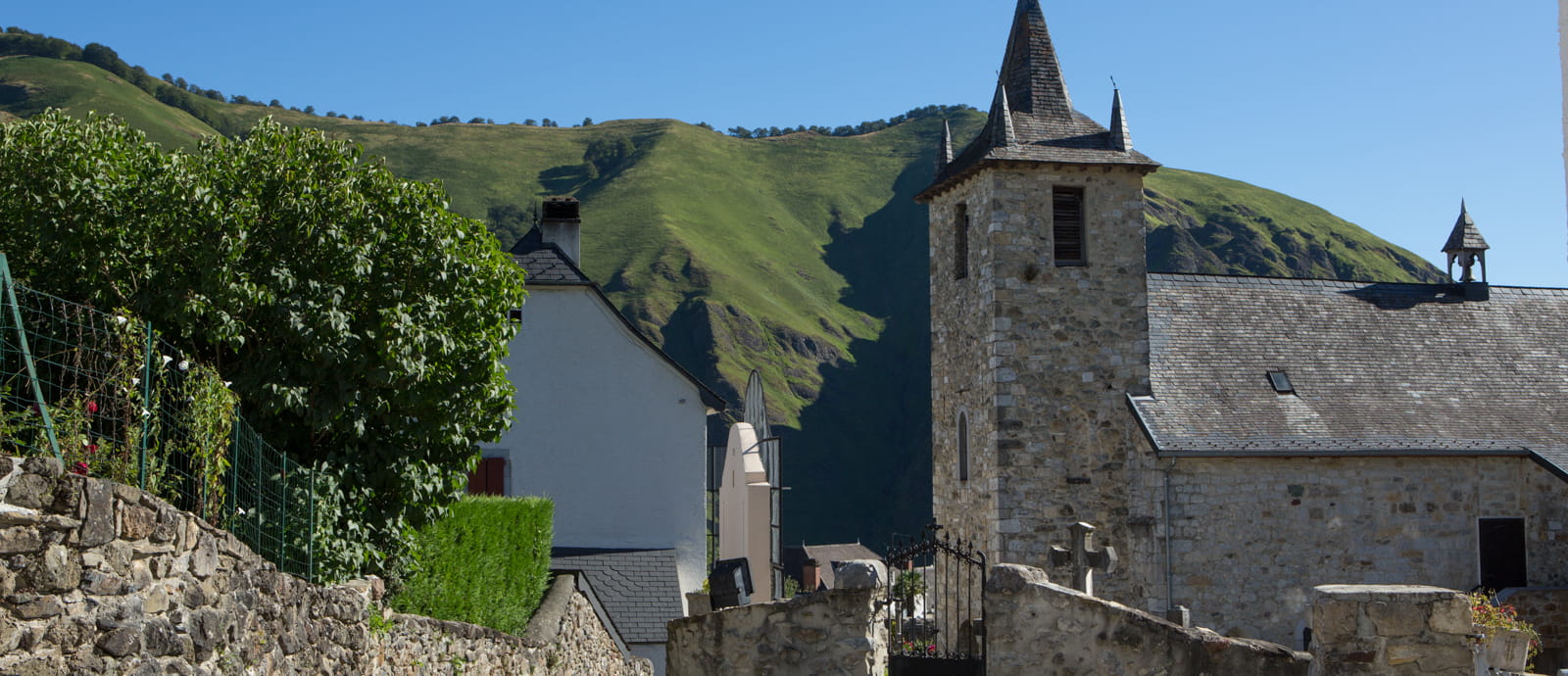
Larrau: A land of tradition and hiking
Larraine
Nestling in the foothills of the highest mountain peak in the Basque Country, the Pic d’Orhy, Larrau is a Must for hikers and the starting point for the iconic Holzarte bridge hike.
It is also worth strolling through the streets of this picturesque mountain village, with its typical sloping slate roofs that remind us that the winter snow will soon be coming.
In the summer, the shepherds head to the cayolars in the mountains to make sheep’s milk cheese.
Stunning hiking trails
You will discover an unlimited choice of hiking possibilities: from the Pista waterfall, to the highest peak in the Basque Country, the Pic d’Orhy, and the famous Holzarte bridge.
Two important hiking trails, the GR10 and the HPR, also pass by Larrau.

The Pic d’Orhy
A hike to the highest point in the Basque Country: 2,017 m
Awaiting you at the summit is a breathtaking panoramic view, on one side over the Bay of Biscay and the Pic d’Anie, and on the other Béarn and the first peaks of the Pyrenees!
The starting point is from the Port de Larrau. The climb along the sharp and arid ridge is relatively easy. It takes approximately 3 hours to complete the hike, there and back.
The Holzarte footbridge
A footbridge suspended 180m in the air.
The start of the trail begins at the Logibar inn, it will take approximately 2 hours to go there and back, and 4h30 to do the Olhadubi circuit.
The Holzarte footbridge sways to the rhythm of the walkers’ footsteps, 180m above the ground. The bridge is 70 m long. This dizzying suspended footbridge was built in 1920. At the time, it allowed woodcutters to cross the Olhadübi canyon.
It is now a spectacular crossing and a favourite among hiking enthusiasts.
The life of a shepherd in the wild landscape
The tradition of pastoralism
Summer grazing has always shaped and maintained the mountain's landscape.
In Larrau, and Soule in general, pastoralism is a common practice. It consists of taking the livestock to higher pastures: this activity is called transhumance. The aim is to protect the fields in the valley, so they can be used to make hay and grass reserves for winter.
In May and June, the shepherds head up to their mountain huts, called “cayolar” or “olha” in the Souletin dialect. They spend the whole summer up there and come back down in September.
During the summer, they make cheese in the cayolars.
The making of summer cheese
The cheese is produced only in the summer by shepherds living in cayolars. This cheese has a truly unique taste thanks to the sheep having grazed only on mountain grass and the shepherds’ know-how.
Francis Poineau is what is known as a shepherd without land. As he has done for many years, from the end of March to the end of September, he moves to Larrau, to the Ardakotxia cayolar. The cayolar is situated near the edge of the Holzarte gorges, accessible by a 2-hour walk or by car. From 9am to 1pm, you will find him in his mountain hut, where he will be happy to tell you all about his work.
Contact: +33 (0) 670 637 711 - poineau@orange.fr
Life in the mountain pastures























